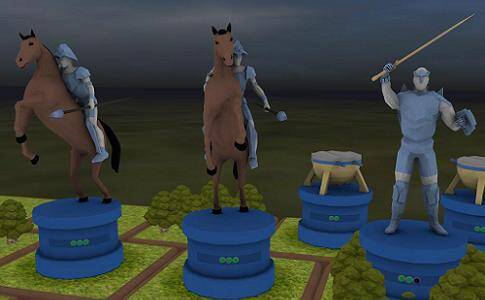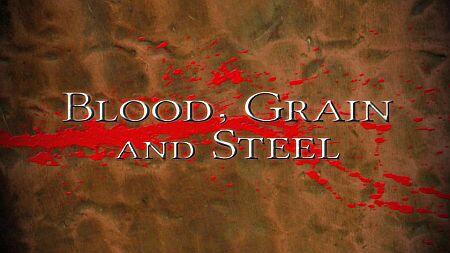Developer Summary
- NEW! Random Board Designer: Procedurally generate thousands of new Skirmish battle boards using a simple set of slider controls.
- Turn-Based Tactics: Battles can be played for as long as you like, a quick blast or an epic session! Play a skirmish match, or wage war in the grand campaign.
- Deep Strategy with Logistics: Can you dominate the battlefield with your carefully chosen army? Do your forces have enough grain to withstand a seige? Will your strategy defeat the enemy and conquer the world?
- One or Two Players: Play against the AI or challenge a friend in hotseat, over a local network connection or via e-mail (PBEM).
- Massive Game World: 280 individually hand-crafted game boards to master.
- Modding Support: You can tinker with the rules, add more boards or change existing ones.
What We Think:
Turn-based strategies are a delicate art; pacing is everything and it’s important that tactics and balance are tempered with regular reward. The genre, by its nature, provides measured and reasonably slow experiences (compared to other gaming genres at least) and it can be easy to drive away potential gamers with these qualities if the game doesn’t also offer some level of excitement and deep involvement. Blood, Grain and Steel faces this challenge, presenting turn-based strategy elements reminiscent of Total War combined with chess style grids.
Blood, Grain and Steel opens with the option of a fairly comprehensive tutorial that will guide you through the basics of the game from moving on the campaign map to the different units available to you. It’s a refreshingly brief tutorial for a turn-based strategy and you should have the information you need to play the game in about ten minutes. That said, it could be a little more detailed in describing the way in which combat units interact with one another.

The game is played across two arenas, the first being a large campaign map with provinces taking up squares in a preset grid. Your faction is given a stronghold, as is the opposing force. From here you can order your armies to make moves, manufacture new armies and control the distribution of the one resource in the game: grain. Each turn you can move any army you possess, automatically conquering neutral tiles for your faction while initiating battle if you attack an enemy held tile.
The second arena is a smaller scale battle grid which looks rather similar to the campaign map, but features the components of each army in the form of units. On the campaign grid, armies carry grain (the only defining characteristic of each individual army) and the amount of grain your army possesses determines how much you have to spend on different units when you enter a battle. Each unit has a price and a turn-by-turn upkeep cost, forcing you to be careful about overspending.

The units themselves are reasonably varied, if not particularly exciting. The Paladin is effectively your general and you must recruit at least one into a battle. The Soldier is an average troop which can manoeuvre across any terrain and has no particular advantages. In contrast, the Rider unit can move fast across plains but suffers severe drawbacks in almost any other terrain type. The Infiltrator is a fast-moving unit with an advantage on rugged terrain. Finally the Catapult is a ranged, immobile unit that requires an enormous quantity of grain to fire.
These units, while well rounded, aren’t especially enjoyable to play; their individual traits often feel underplayed and specific unit abilities would go a long way to giving them more character. In battle, only one unit can be moved per turn and the limited movement range of each unit can turn battles into long grinds as you slowly manoeuvre troops towards your enemy over far too much empty land.

The larger scale aspects of Blood, Grain and Steel are defined by the grain mechanic. Each tile of land has a certain amount of grain, and armies can be made from 10,000 grain. Armies can also deposit grain into a tile, fortifying the tile against potential invasions. This is an interesting concept and balancing the use of grain makes for an engaging challenge. That said, this is the only real resource management in the game, otherwise Blood, Grain and Steel is all about moving armies.
Aesthetically, Blood, Grain and Steel features reasonable graphics that support the gameplay well enough. The tiles are varied and terrain ranges from snowy mountains to flat plains. The camera is free to navigate the game board, allowing you to easily get the angle that’s right for you. The units leave something to be desired, however, and while the goal may have been to make them look like playing pieces, they do sometimes appear a little unfinished, like a coat of paint is needed to complete them.
Blood, Grain and Steel is an intriguing concept. The game certainly has potential but at the moment it feels like it’s caught halfway between a simple but engaging tactics game and a complex turn-based strategy. The campaign lacks the intense resource management and decision making that makes the best turn-based strategies involving, while the battles themselves are too drawn out and dependent on inching across the board to make a quick skirmish enjoyable.
Under these imperfections Blood, Grain and Steel has the bones of a unique strategy title but it hasn’t quite found its niche yet.
Get Blood, Grain and Steel at the Official Site
[xrr rating=”3/5″]





